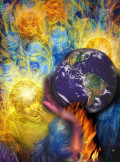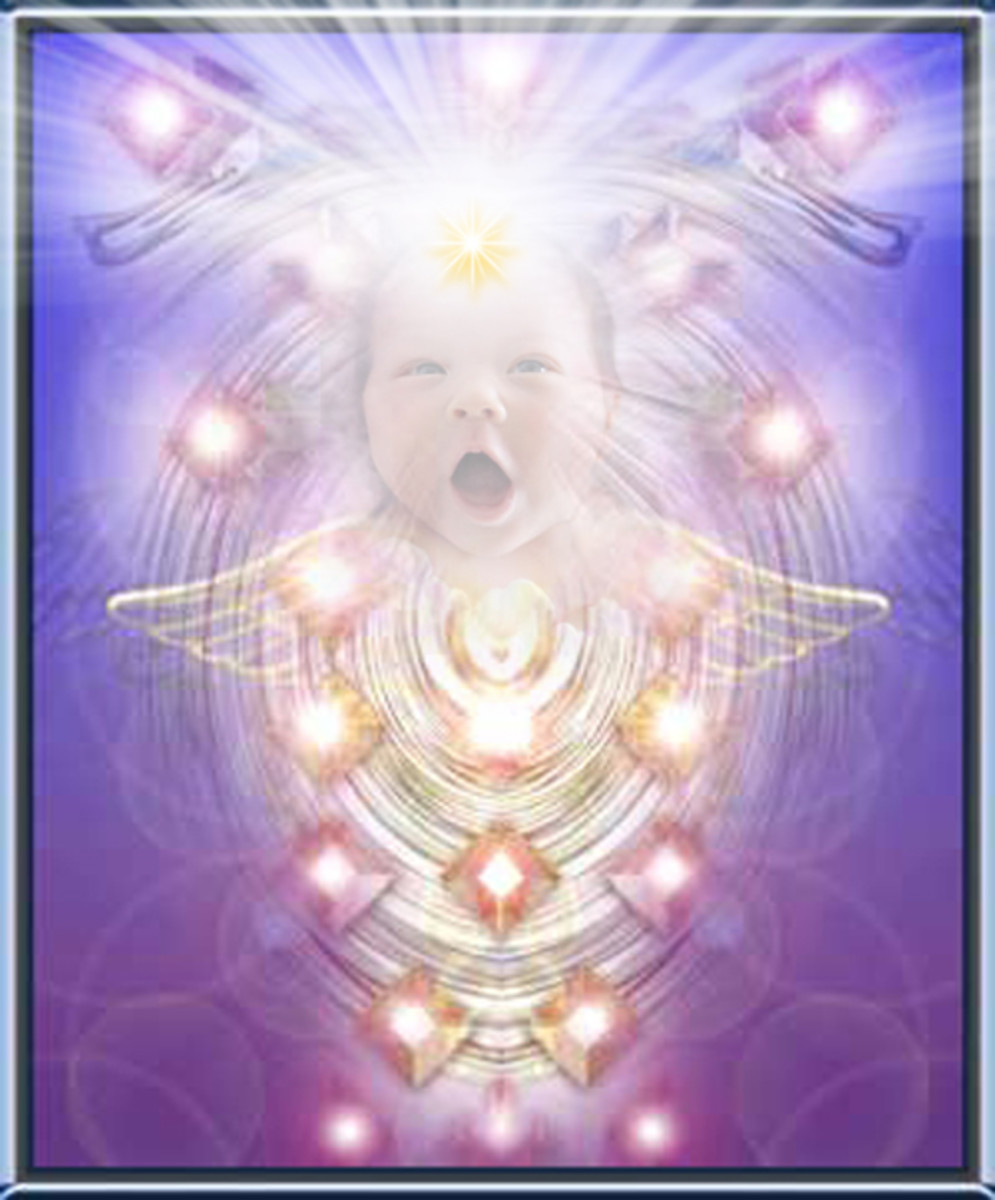- HubPages»
- Religion and Philosophy»
- Astrology & Metaphysics»
- Spirituality
Dark Matters: Elementals, Nature and Us
Into the woods...
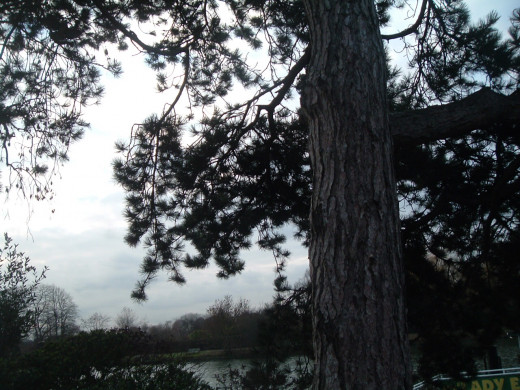
A forest home
A recent episode of A Haunting (Pick Channel, UK) told the story of a young family that went to live in a forest house near Lake Worth, Florida, during the 1960s. The two sons, Tim and Tom, were delighted with their new home and like all young boys, enjoyed exploring the countryside. Before long, strange happening in the forest and inside the family house began to unsettle the boys. These included disturbances in the treeswhen they were outside and the appearance of a “shadow man” in the boys’ bedroom.
Tom, the older brother, took to sleepwalking, leaving the room and walking down to a stretch of water near the house, in the middle of the night. In order to stop him, the boys’ parents piled chairs outside of the bedroom door. But Tom still went into his trance and tried to leave the bedroom. When he couldn’t get out, Tim saw the door of the bedroom closet open by itself and Tom go inside. Presently, Tim heard Tom conversing with another person. The hysterical Tim shouted for his parents, who hurried to the room and found Tom in the closet – alone.
Later, Tom recalled seeing a dark figure with red eyes. The antics of the shadow man became even more malevolent, clambering across the bedroom ceiling and showering the boys with sticks, stones and insects from the forest. The boys’ desperate mother used a spirit board to try to contact the shadow man, but this only stirred up its activity. One night, the terrified boys rushed to their parents’ room but they only succeeded in making their father beyond angry. Needless to say, the father believed the boys were hoaxing.
Animal, vegetable and mineral
Since ancient times, numerous cultures have expressed belief in elementals, spiritual forces that reside in the building blocks of the universe, that is, earth, air, fire and water. This belief is so entrenched that house cleansing rites, as I describe in my article Dark Matters: Earth, Air, Fire and Water, involve the presence of each of these, for example, burning candles or sage, blessed water and the recitation of prayers.
Ever aware of man’s connection with nature, tribes and families have adopted natural emblems, animal, vegetable and mineral, to feature in family crests and other insignia. The animal totems of the Native American tribes are one example. Mythologies all over the world have names for the elementals that dwell in mountains and forests, in lakes, rivers and springs. Paracelsus, the 16th-century scientist, actually grouped elementals into types: elves and goblins, sylphs, undines and salamanders.
Shadow person....
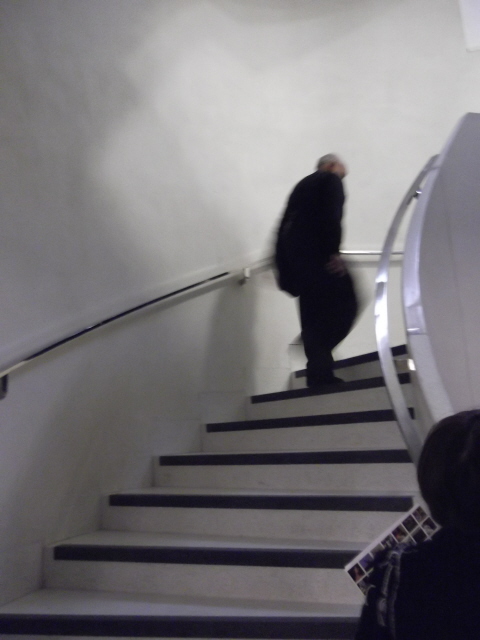
Earth elementals
A recent episode of Monsters and Mysteries (Pick Channel, UK) - known also as Monsters and Mysteries in America - recounted how an “evil goblin” terrorized a family in Porterville, California. The goblin, described as very ugly and having a horrible, bloodcurdling laugh, had supernatural abilities. Although it never entered the family home, the family Mom described how it would look in a window one side of the house and in an instant, appear on the other side. This discounts any rationalisation of the goblin as a deformed human who has grown malevolent from taunts about a grotesque appearance.
Ironically, the family, who had moved to the forest house for a life of peace and quiet, soon moved home. Pierre Grimal describes Thersites, the Greek goblin as “the ugliest…of the Greeks at Troy. He limped and was bandy-legged with round shoulders and only the odd hair on his head.” However, not all earth elementals are evil. In Irish folklore, the leprechaun is a friendly, helpful creature, reputed to bring good fortune. In other folklores, elves are hard-working little people, mending shoes and making toys.
Spirits of the night...
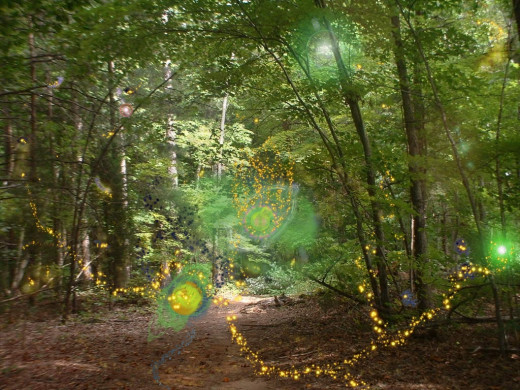
Fairies, sylphs and sprites
I have seen many television shows about alleged hauntings and one phenomenon that does seem to establish definite spirit activity is the presence of globes of light appearing in houses. Occasionally, occupants see these with the naked eye but most often, they are captured on film or photograph. On film, these small semitransparent globes travel in definite paths, sometimes seeming to have intelligence, as opposed to the random movements of dust particles or insects.
Victorian times saw an exponential expansion of interest in the subject of fairies, with many well-known artists – most notably, Richard Dadd – creating extravagant depictions of the little, winged creatures, and frequently portrayed them surrounded light. The same era saw the invention of the camera. Could it be that an unsung pioneer of photography, somewhere, unwittingly captured globes of light on a barium or silver plate, firing creative imaginations for a generation and more?
Fire and water
Generations of sailors have brought us tales of mermen and mermaids from sea voyages, creatures that are half-human and half-fish, which have infiltrated popular folklore. Paracelsus defined the undine or ondine, river spirits that become human in appearance and behaviour when in human captivity. So entrenched was belief in the undine that for centuries, Emperor Henry VII (1275-1313) and other members of European nobility claimed descent from Melusina, a beautiful river goddess.
On considering the evidence of the elemental at Lake Worth, I believe that a salamander or fire elemental disturbed the afflicted household. Today, we know the salamander as an amphibian that spends much of its time in water, but Paracelsus used the name to define an elemental that seemed to have affinity with fire. The ancients believed the salamander to be born of fire, because of the coloured, often flame-type patterns on the bodies of the various species. To recap, the boys remembered seeing a dark figure with red, glowing eyes that had the ability to climb walls and walk across the ceiling.
Why it directed its malevolence at the family is hard to imagine. One theory is that elementals feed on negative energy and that the boys’ father, who had suffered PTSD while in the army, was unwittingly attracting the creature. His anger at the boys’ discomfiture only made matters worse. In an extreme instance, the younger boy was so frightened that he ran into a bedroom wall and broke both collar bones.
Slowly, the elemental destroyed the family. Both boys left the house when they were old enough, and the parents died. Tim became a paranormal investigator; determined to rid his former home of evil, he returned to it with a spiritualist friend and they performed a cleansing. Tim and his brother were eventually reunited. They are determined to keep the elemental from returning to the house by keeping its interior happy and positive - though they know that danger still lurks outside. But why all of these recent encounters with elementals?
My conclusion is that the world is more populated than it has ever been. We are encroaching into areas that one time would have been inaccessible. Ironically, it seems that the technologies that allow us experience extremes of nature, on the edges of the world, are also opening the doors on ancient forces. I will continue to research this fascinating subject.
Sources
Dictionary of Classical Mythology, edited by Pierre Grimal





